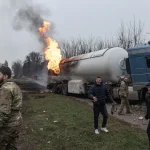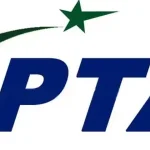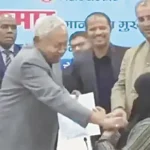Prime Minister Muhammad Nawaz Sharif on Thursday said China Pakistan Economic Corridor will make Pakistan a regional manufacturing hub and very attractive market for Foreign Direct Investment (FDI) as it comprised major infrastructure, energy and communication projects.
In a meeting with President KOC Group Turkey Fatih Kemal Ebiclioglu along with delegation which called on him at the PM House, the prime minister said Pakistan’s outlook for attracting Foreign Direct Investment was continuously improving and the improvement in security situation has enhanced Pakistan’s position as an attractive destination for FDI in the last three years.
Ambassador of Turkey to Pakistan Babur Girgin was also present during the meeting.
Welcoming the delegation, the prime minister said that the government and people of Pakistan attached great importance to relationship with Turkey. Pakistan and Turkey shared common perceptions on all regional and international issues, he added.
Prime Minister Nawaz Sharif appreciated the initiative of the KOC Group to enter into the Pakistani market by acquiring Dawlance, Pakistan’s premium home appliances company.
Appreciating the current FDI from Turkey to Pakistan in energy, infrastructure, construction and services sectors, the prime minister expressed hope for substantial increase in investment from Turkish companies in future.
“Our Investment Policy has been designed to provide a comprehensive framework for creating a conducive business environment for the attraction of Foreign Direct Investment;
Pakistan’s policy trends have been consistent, with liberalization, de-regulation, privatization, and facilitation, being its foremost cornerstone,” he said.
He said it was encouraging that leading Turkish companies were interested in investment in Pakistan’s energy, infrastructure, construction and services sectors.
Appreciating the economic turnaround achieved by the present government Fatih Kemal Ebiclioglu said that Pakistan was an ideal place for investment and his company is determined to further invest in various sectors of Pakistan’s economy.
He said the acknowledgement of Pakistan’s improved economic credentials by credible International Financial Institutions the world over is indeed commendable. Pakistan has immense potential for investment which is bound to increase phenomenally in near future due to the prudent economic and investor friendly policies of the present government, he added.
Other members of the delegation included Levent Cakirogiu, Hakan Hamdi Bulgurlu and Salih Arslantas. Muhammad Ishaq Dar, Minister for Finance, Engineer Khurran Dastgir Khan, Minister for Commerce, Mifta Ismail, Chairman BOI and other senior government officials were also attended the meeting.






Solution to Manufacturing in Pakistan – Part 1
Some people lament the “lack of manufacturing capacities” in Pakistan.Had the Pakistan state pushed for manufacturing capacities a few decades ago – it would have had the “NPA disaster of the Hindoo Nation”.The Aggregate of the NPA in the Banking,NBFC,CHit fund,Co-operatives and Unorganised sector,in Hindoosthan,would be around USD 300 billion USD (at the minimum) – which is enough to destroy Hindoosthan. An Oil shock or a 15 day full-scale conventional war,will destroy Hindoosthan – simply by the “geometric expansion of NPAs” and the “physical annihilation of manufacturing”,in North Western Hindooosthan.dindooohindoo
History
There was no point in manufacturing in SAARC, a few decades ago, as everything was being sold by PRC,at half the total cost of the importing nation,and there was no skilled labour and management expertise in nations like Pakistan,at that point of time.The costs in PRC have now matured and stabilised and the tastes of the Pakistani consumer have stabilised and matured.
Current Tenor
The situation is ripe for manufacturing in the current times – with the benefit of obviating FX outflows and smuggling and boosting indirect tax revenue.
Exanple of “As-Is” Import
Let us assume that a product is being imported at a cost of USD 1000/piece or per ton CIF,with the Tariff rate of say 35% – wherein the actual compliance with duty,is only 10%.In this case,the profit which accrues to the trader or maker o/s Pakistan is not taxable in Pakistan,and the same applies to the sea freight and the freight forwarder’s commission.Since, the CIF cargo is misdeclared at Port Qasim – it is obvious that the sale of the said item,in the wholesale and retail market,would be w/o tax.
Exanple of “Proposed” Manufacture – Case 1
If the said item is made in Pakistan, the Marginal cost would be say,650 USD and the Total cost (including non cash and amortised costs) would be around USD 900. However, the manufacturer would need to import the materials or the item/component in CKD/SKD condition.Since,this will be a bulk import,in industrial packaging,it would be at a lower cost,and the importer would pay the merit duty applicable – as there will be no duty evasion,no smuggling, no corruption, no hawala and the
USD outflow can be deferred.
The indigenous cost in Pakistan such as salaries,purchases and power – would be subject to indirect and direct tax (and TDS) which cannot be avoided.In addition,the power consumption will provide a proximate estimate of the actual production of the factory.
If the manufacturer has paid the import duty on material imports and has no captive DG set for power – then the sales of the products will have to be on record.Let us say that this factory is in State X , and he sells to a dealer in state X at the 1st point.Ideally the states should have a 1st point tax – and then all sales in the same state of the “said invoice” (of the 1st point of sale) will be exempt from indirect tax.If tax is at the last point – then that last point will never come and the Revenue deptt will keep on doing reconciliations.If there is a multi-point tax,there will be avoidance (as no one will pay tax on financial value addition),and the state will have to prove the sale at each
point.So full indirect tax revenue will be realised on the mode of “1st point tax”.In any case, the factory will have all the data w.r.t the last point retailer as part of its CRM and its Dealer/Retailer incentives and Dealer management plans
Exanple of “Proposed” Manufacture – Case 2
If the manufacturer decides not to import the materials and purchases the same from local sources (who are the illegal importers) and does not use Grid Power or does not use metered Grid Power – the he would sell the products “off the record/books”.However,in this case, there will at least be some manufacturing in the state and the FX outflow would be “far lesser than before”.
Fiscal Levy Model in Exanple of “Proposed” Manufacture – Case 1
In the 1st case, the state should levy the import duty on the material or component imports,in a manner,such that the total taxes accrued to the state,across the supply chain of the manufacture for the unit,and its extended supply chain and staff = 35% (which was the original import duty on the finished product)
In other words,the aggregate of the understated components, as under:
Import duty on material/component import
Tax of staff salaries of factory
Indirect tax on local purchases
Cess and Duties on SEB power purchases
Tax on sale of Products
Profit tax on producer and supplier of local purchases
Cross Subsidy benefits to state on SEB purchases
Should be around 35% of the finished goods price (NSR),which was the original import duty on the finished product
Fiscal Levy Model in Exanple of “Proposed” Manufacture – Case 2
In this case,for those products where there is no “on record manufacturing” in the nation, an import duty on materials equal to current deemed duty (hawala charges bribes and the actual duty paid) plus a small premium,can be imposed, to bring the downstream sales of the finished products into the indirect tax net (on the mode of the 1st point sales tax).Once the imported materials are “on record”,then the “downstream production” will also be on record.
However,if the production is viable only by power theft,avoiding pollution taxes,doing hazardous manufacturing and evading the indirect taxes on sale of finished products – then the said production can be shut down – by licensing the production to the original manufacturers on a sole license basis with direct tax holidays.
Alt Manufacturing Strategy
In the Alt, based on import data from Pakistani ports and the export data from load ports, if the overseas manufacturers or traders are offered “sole manufacturing and sales rights”, in Pakistan or parts of Pakistan (by law or by banning imports or charging high duties/TBT etc.), the overseas suppliers will be glad to set up or partner with,local partners to set up manufacturing capacities,for all types of consumer goods (at the minimum)
In addition, there will be several types of manufacturing which overseas suppliers/bankers/ entrepreneurs will be glad to outsource to Pakistan on account of pollution effluents, environmental issues,hazardous chemicals,requirements of water,obsolete or phased out technologies in USA/EU,labour intensive technology,2nd hand machinery on the books of cash strapped banks etc – who will be glad to relocate to Pakistan.
Export Interface
It would be reasonable to assume that the “VA norms” of various trade treaties applicable to Pakistan,would qualify the COO of these manufactured products,as Pakistani and thus,would qualify as “Nil Duty/Concessional Duty access” to export markets (even ignoring, the financial value addition)
The manufacturing hubs of the abovesaid products can be located near Ports and also near the SEZ/EOU and within the DTA of the EOU (to lower logistics costs) – so that the manufacturers can offload excess capacities to SEZ and EOU on CMT/Job work or where the suppliers manufacture semi-finished products which are sold to SEZ and then exported – and this is treated as a Deemed/Physical export for the DTA Manufacturer